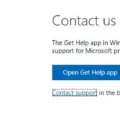It’s no secret that cyber attacks are becoming more and more common around the world. Canada is no exception, with reports of cyberattacks increasing year after year. In fact, data from the Canadian Centre for Cyber Security shows that Canadians were victims of over 2 million cyber incidents in 2020 alone.
With so many people vulnerable to these attacks, it’s important to understand what they are and how you can protect yourself. Here we will look at the most common forms of cyber attacks in Canada, the potential impacts of these attacks, and how you can keep yourself safe online.
The most common type of cyber attack in Canada is phishing. Phishing scams are when criminals send out emails or messages that appear to be from a legitimate source, but actually contain malicious links or software which can steal personal information such as passwords or credit card numbers. Other common types include ransomware, which encrypts a user’s data until a ransom is paid; malware, which allows criminals to gain access to a computer system; and DDoS attacks, which involve flooding a server with requests so it cannot respond to legitimate requests.
These types of attacks can have serious consequences for both individuals and businesses alike. For individuals, this could mean having their personal information stolen or their accounts hacked. For businesses, it could mean losing customer data or suffering financial losses due to downtime or system repairs following an attack.
Fortunately, there are steps you can take to protect yourself against cyber attacks in Canada. First and foremost, make sure you have up-to-date antivirus software installed on all of your devices and ensure that all security patches are applied regularly. Additionally, be wary of any emails or messages you receive from unfamiliar sources as they may contain malicious links or attachments. Finally, be sure to use strong passwords on all of your accounts and consider using two-factor authentication (2FA) for added security.
By understanding the risks posed by cyberattacks and taking steps to protect yourself online, you can help ensure that you don’t become a victim of this increasingly common threat in Canada.

Recent Cyber Attacks
Recent cyber attacks have included a variety of malicious activities, ranging from data breaches to malware infiltration. In March 2021, Microsoft Azure was affected by an SSRF (Server Side Request Forgery) vulnerability that allowed attackers to access private information from customers’ cloud-based accounts. In the same month, Slack’s GitHub account was hacked which resulted in the leaking of sensitive information. Also in March, 228 million Deezer users had their data stolen and 200 million Twitter users’ private data was leaked. Additionally, over 30 WordPress plugins were targeted with malware, while Kubernetes clusters were also hacked. Looking ahead to 2022, the top 10 cyber attacks are predicted to include ransomware, phishing campaigns, distributed denial-of-service (DDoS) attacks, and credential stuffing attacks, while the top 10 vulnerabilities are expected to be related to unpatched software or hardware systems and weak authentication protocols such as passwords.
Top 10 Most Common Cyber Attacks
1. Malware: Malware is malicious software designed to damage, disrupt, or gain access to a computer system. It can be spread through email, downloads, or other online applications and infiltrates a computer without its user’s knowledge or consent. Types of malware include viruses, worms, ransomware, and spyware.
2. Denial-of-Service (DoS) Attacks: A DoS attack is an attempt by a malicious actor to make an online service unavailable by flooding it with traffic from multiple sources in order to overload its capacity.
3. Phishing: Phishing is an attempt by cybercriminals to obtain sensitive information such as usernames, passwords, and credit card details by disguising themselves as a trustworthy entity in electronic communication.
4. Spoofing: Spoofing is the act of attempting to gain unauthorized access to a computer system by impersonating another user or program. This type of attack usually involves sending emails that appear to come from legitimate services or companies in order to trick people into revealing confidential information.
5. Identity-Based Attacks: Identity-based attacks are attempts by malicious actors to gain access to a system using stolen credentials or personal data obtained through phishing campaigns or other malicious means. These attacks can be used for financial fraud, data theft, and even espionage purposes.
6. Code Injection Attacks: Code injection attacks are attempts by hackers to inject malicious code into websites and applications in order to gain access or cause damage. They can be used for data theft, destruction of data, and other malicious activities such as installing malware on users’ computers without their knowledge.
7. Supply Chain Attacks: Supply chain attacks involve compromising the security of the systems that control the flow of materials and finished products between suppliers and customers in order to steal sensitive data or disrupt operations.
8. Insider Threats: Insider threats are security breaches caused by employees with access privileges who use their knowledge for malicious purposes such as stealing confidential information or sabotaging systems for personal gain or revenge against an organization they work for or have worked for previously.
9 Cross-Site Scripting (XSS): Cross-site scripting (XSS) is when attackers inject malicious scripts into webpages which are then executed when users view them on their browsers in order to steal sensitive information such as usernames and passwords or hijack user accounts on websites that do not properly filter user inputted scripts before executing them on the server side of the application codebase.
10 Man-in-the-Middle (MitM) Attacks: Man-in-the-middle (MitM) attacks happen when attackers intercept communication between two parties in order to steal confidential information such as passwords and credit card numbers without either party knowing about it until it’s too late.
The Top Cybersecurity Threat of Today
The number one cybersecurity threat facing organizations today is phishing attacks. Phishing is a type of cyber attack in which an attacker attempts to acquire sensitive information, such as passwords or credit card numbers, by masquerading as a legitimate company or individual. Attackers typically use emails, text messages, and social media messages to lure victims into providing their confidential information.
Phishing attacks have grown exponentially in recent years, accounting for 90% of all breaches that organizations face. In fact, the number of phishing attacks has increased 65% over the last year and business losses due to these attacks are estimated to be over $12 billion.
Organizations of all sizes are at risk of being targeted by phishing attacks, but small businesses are especially vulnerable as they often lack the resources necessary to defend against such threats. To protect themselves from phishing attacks, small businesses should invest in comprehensive security solutions such as email filtering and advanced authentication protocols. Additionally, they should provide their employees with regular training on how to recognize and respond to suspicious emails and other forms of communication.
Duration of Cyber Attacks
The duration of a cyber attack can vary greatly, depending on the type of attack and the resources available to the attacker. For example, Distributed Denial of Service (DDoS) attacks have been known to last up to several days if not addressed quickly. Similarly, ransomware attacks have been known to last for weeks if not dealt with promptly. In some cases, attackers have even been able to gain access to a system for months or even years without being detected. As such, it is impossible to give an exact answer as to how long a cyber attack can last; however, by taking proper precautions and implementing a well-structured security system, organizations can minimize the duration and severity of such attacks.
Consequences of a Cyber Attack
If there is a cyber attack, it can be very disruptive and damaging. Depending on the type of attack, it can have a variety of effects. It could involve stealing your personal information such as passwords or financial data, disrupting online services you rely on like email or banking, accessing sensitive computer systems such as government networks, or even sabotaging physical systems like power grids. In any case, it is important to take the necessary steps to protect yourself from cyber attacks by regularly updating your antivirus and firewall software, patching any vulnerabilities in your system, and limiting access to sensitive data by using strong passwords and two-factor authentication.
Conclusion
In conclusion, cyber-attacks are a global threat that affects Canada just as much as any other country. Whether it be through malware, denial-of-service attacks, phishing, identity-based attacks, or code injection attacks, these malicious activities have the potential to cause significant damage to businesses and individuals alike. As such, it is essential for Canadians to remain vigilant and take the necessary steps to protect themselves from these threats. This includes educating oneself on the various types of cyber attacks and familiarizing one with best practices for staying secure online. Additionally, businesses should invest in reliable cybersecurity solutions that can help detect and mitigate these malicious activities before they cause any harm. Taking these precautions will go a long way toward ensuring that Canadians stay safe from cyber threats in the future.








